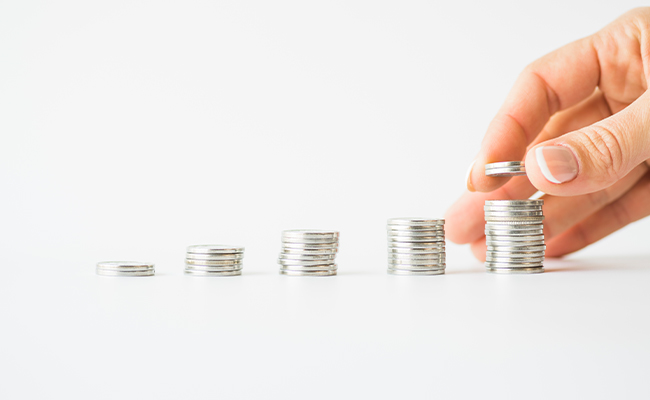The Debt Snowball Method: How to Get Out of Debt
Debt- from loans, credit cards, or unpaid bills – can quickly become debilitating and overwhelming. This debt will steadily worsen your credit until your credit score is so low that you can’t buy anything of value. It keeps you from purchasing vehicles and obtaining property. This is why a lot of individuals look for repayment solutions such as the debt snowball method.
This article will look at how this method of debt reduction can help you as well as some of its pros and cons. Learn more if this method is for you.
What Is the Debt Snowball Method?
The debt snowball method is a popular debt repayment strategy that involves paying off debts in order from smallest to largest balance. Individuals get to focus on the smallest debt first and make minimum payments to others. By doing this, individuals can gain a sense of accomplishment and motivation as they eliminate debts individually.
It is intended for individuals with several debts, such as loan payments, credit card bills, etc. It can help you slowly but steadily raise your credit score and debt service coverage ratio.
You May Also Like: Debt Avalanche Method: A Comprehensive Guide
Why Is It Called the Snowball Method?
As each debt is paid off, the money previously used for that debt is rolled over to the next one, creating a snowball effect. The debt snowball method is called so because it gains momentum and grows, much like a snowball rolling down a hill.
As you eliminate the smallest debt, the money you allocate towards it is added to the minimum payment of the next smallest debt. This process continues as you tackle each subsequent debt.
Read More: Debt Management Methods: Successful Strategies for Your Debt
How Does the Debt Snowball Method Work?
Since the debt snowball method works by helping individuals pay off their debts systematically and gain momentum along the way, you pay off the smallest debts first. Once the smallest one is paid off, you use the money that used to go into it to pay the next smallest. You keep rolling the money from one debt to the next until each has been paid in full, from the smallest to the largest.
Step-by-step guide on how to execute the debt snowball method
- Arrange the debts from smallest to largest.
- Set aside extra money to eliminate debts. Once you’ve budgeted for minimum payments, set aside some money to pay off debts above these amounts.
- Apply the money to the smallest debt. Don’t try to divide it among all your debts – the goal is to focus on one at a time.
- Roll the money over to the next debt. Once the smallest debt is paid, please take all the money towards it, including minimum payments and the extra money, and apply it to the next debt.
- Keep rolling. With each debt repayment, you will free up money that no longer goes towards monthly payments or getting set aside. Roll all of it over to pay the next debt.
Pros of the Debt Snowball Method
The debt snowball method offers several advantages that make it an appealing debt repayment strategy:
Psychological Motivation
One of the significant pros of the debt snowball method is its focus on paying off the smallest debts first. As individuals eliminate these smaller debts quickly, they experience a sense of accomplishment and motivation. This psychological boost encourages them to stay committed to the debt repayment journey.
Simplified Debt Management
The method simplifies debt management by concentrating on one debt at a time. As smaller debts are paid off, individuals have fewer debts to juggle, making tracking progress and staying organized easier.
Building Momentum
As debts are paid off individually, the method creates a snowball effect. The funds previously used for each cleared debt are added to the next. This growing payment amount builds momentum and accelerates the debt repayment process.
Positive Financial Habits
Following the debt snowball method requires budgeting effectively and avoiding new debt. It instills positive financial habits, such as disciplined spending and saving, which can contribute to long-term economic well-being.
Quick Wins
The method prioritizes small victories by paying off the smallest debts early on. These quick wins motivate individuals and reinforce their commitment to achieving debt-free status.
Overall, the debt snowball method provides a structured and psychologically rewarding approach to debt repayment, making it an effective strategy for many people seeking to regain control of their finances.
You May Also Like: Debt Settlement: How It Works, Risks, and Drawbacks
Cons of the Debt Snowball Method
While the debt snowball method offers various benefits, it also has some potential drawbacks that individuals should consider:
Paying More Interest
Since the method prioritizes paying off the smallest debts first, it may not always target debts with the highest interest rates. As a result, individuals may pay more interest over time, especially if higher-interest debts are left for later stages of the snowball.
Ignoring Interest Rates
Unlike other debt repayment strategies like the Debt Avalanche Method, the debt snowball method does not consider interest rates when deciding the debt repayment order. Ignoring interest rates could lead to suboptimal financial decisions, as higher-interest debts may continue to accrue more interest while focusing on smaller balances.
Longer Debt Repayment Timeline
While the method’s quick wins can provide psychological motivation, it may not always be the most efficient approach to eliminating debts. Prioritizing emotional satisfaction may extend the overall debt repayment timeline compared to methods that tackle high-interest debts first.
Personal Discipline
The debt snowball method relies on individuals consistently adhering to the plan and directing any extra funds toward the smallest debt. It requires self-discipline to avoid using those funds for other expenses or discretionary purchases.
Individual Financial Situations
Not all individuals have the same financial circumstances. Some may have large debts with lower interest rates, while others may have smaller debts with higher interest rates. The suitability of the debt snowball method depends on your specific financial scenario.
Read More: Should I Get a Credit Card: Things You Should Know
Conclusion
The debt snowball method is good if you want to get rid of smaller debts first. This method suits those who wants to gain psychological motivation and momentum. However, if you’re worried about gaining a higher interest rates, this method might affect that. Either way, what’s important is your personal discipline and dedication to your goal.
Frequently Asked Questions
Is the Debt Snowball Method suitable for all types of debt?
The debt snowball method is generally effective for various types of debt, including credit card balances, personal loans, and medical bills. However, it may not be the best approach for debts with significantly high-interest rates, such as certain private student loans or payday loans. In such cases, assessing the interest rates and prioritizing accordingly is essential.
Can the Debt Snowball Method work with a limited budget?
The debt snowball method can be effective even with a limited budget. It relies on starting with the smallest debt, which can often be more manageable to pay off, regardless of the budget size. By consistently allocating any extra funds towards the smallest debt while making minimum payments on others, individuals can still progress and achieve debt reduction success.
Can using the Debt Snowball Method impact my credit score?
Implementing the debt snowball method itself does not directly impact your credit score. However, consistently making on-time payments while using this method can positively influence your credit score over time. As you pay off debts and reduce outstanding balances, your credit utilization ratio may improve, positively affecting your credit score.
Published January 28, 2019; Updated on August 6, 2019; Updated on July 27, 2023.






